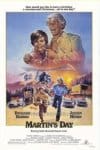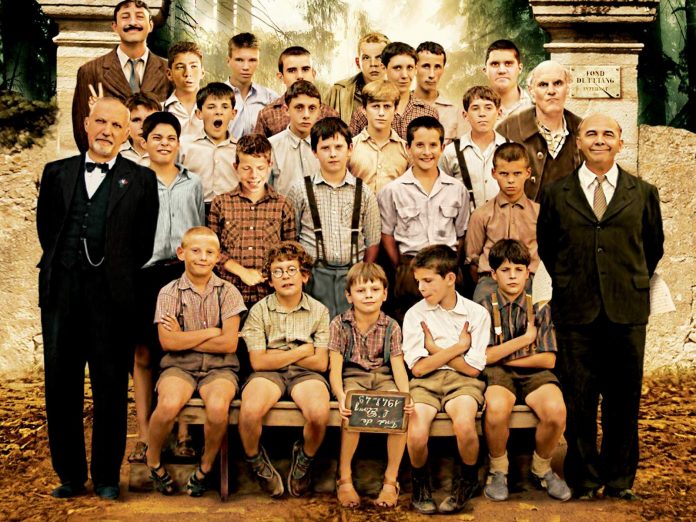One doesn’t always stumble upon excellent movies, but in almost every film one can find something of value. In Gravel Road, a short film film by Keith Fleetwood, the value lies in its soundtrack and in the final message. Starring J.D. and Sam Hunt, the film tells the story of two brothers subjected to physical and psychological abuse from their father, who had become an alcoholic when his wife died. When a teacher notices the bruises on the kids, a report is filed with the Social Services.
Keby som mal pusku (1972)
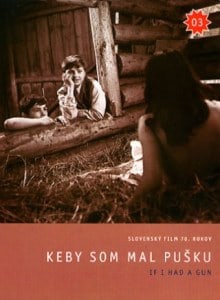 Keby Som Mal Pusku (1972) aka If I Had a Gun is an anti-war themed film exploring the impact of war on children. The action takes place in a small Slovenian village where, despite the ongoing conflict (WWII), children play soldiers, dream of adventures and get into mischief.
Keby Som Mal Pusku (1972) aka If I Had a Gun is an anti-war themed film exploring the impact of war on children. The action takes place in a small Slovenian village where, despite the ongoing conflict (WWII), children play soldiers, dream of adventures and get into mischief.
Zmory (1979)
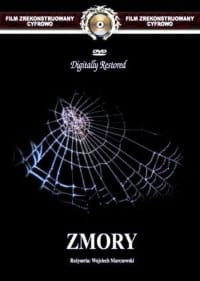 Wojciech Marczewski’s film Zmory (Nightmares) is one of the classic Coming-of-Age titles from Poland that has earned popularity internationally. Before seeing the film, I had a vague idea of what it was about, and the title and cover art convinced me that Zmory could be a horror flick.
Wojciech Marczewski’s film Zmory (Nightmares) is one of the classic Coming-of-Age titles from Poland that has earned popularity internationally. Before seeing the film, I had a vague idea of what it was about, and the title and cover art convinced me that Zmory could be a horror flick.
In reality, the 1979 Polish film offers a true Coming-of-Age narrative that follows
Baklava (2007)
 Stylized idealization is a technique that is frequently applied to films all across the globe. In essence the pursued outcome is the construction of an image of a country (or people living in it), so that the international audience can get a certain idea of what life is like (or was like) in that country. If you have seen any Hollywood films you have seen that technique in use and the same is valid for the majority of the government funded cinema in Europe.
Stylized idealization is a technique that is frequently applied to films all across the globe. In essence the pursued outcome is the construction of an image of a country (or people living in it), so that the international audience can get a certain idea of what life is like (or was like) in that country. If you have seen any Hollywood films you have seen that technique in use and the same is valid for the majority of the government funded cinema in Europe.
But what happens if a director decides to deviate from the expected conformity and present shockingly accurate and realistic portrayals of everyday life in a certain place?
Porcelain Unicorn (2010)
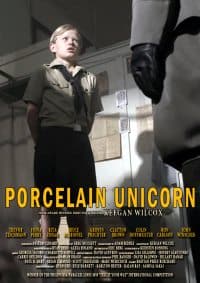
Some people disregard short films, thinking that a captivating story could not possibly be developed in just a few minutes time. Once upon a time I thought this too, but when I started writing about films I discovered that this was wrong. I was reminded of this lesson learned with the poignant 2010 film directed by Keegan Wilcox: Porcelain Unicorn.
Set in present day Germany, the film opens with a flashback. An elderly man recalls an event from his childhood, when he was like many of his friends — a member of the Hitler Youth Organization. As a 12-year-old boy (played by Trevor Teichmann), he had broken into an abandoned Jewish house and discovered a frightened young girl (Fiona Perry) trying to hide from the Nazi soldiers. Suddenly, a search party enters the house and decisions have to be made…
Prior to seeing Porcelain Unicorn I would not have believed that a film could evoke such emotions in me, making me care about the fate of its characters, especially in less than three minutes. This movie provides storytelling at its best, combined with resourceful acting, excellent production design, and a touching musical score. Director Wilcox has filled his short film with meaning, beauty, compassion and hope in the goodness of humanity. I am astonished from the result of what he’s done with this short film and can only imagine what he could achieve at the helm of a full feature movie.
I urge you to invest three minutes of your time. It’s worth it!
Porcelain Unicorn – Full Movie
Introducing Cameron Alexander Molloy
 Cameron Molloy is a boy from Moncton, New Brunswick who turned 12 on 12-Mar-2013. What impresses me most about him is his impeccable pronunciation of lyrics and his clear fearless voice.
Cameron Molloy is a boy from Moncton, New Brunswick who turned 12 on 12-Mar-2013. What impresses me most about him is his impeccable pronunciation of lyrics and his clear fearless voice.
The pleasure he derives from singing and performing are soon apparent to listeners of his music. There is a joy in chirping out those choruses and playing his six-string acoustic, which you don‘t always hear in young singers. But that is what it should be about!
Jesus Henry Christ (2012)
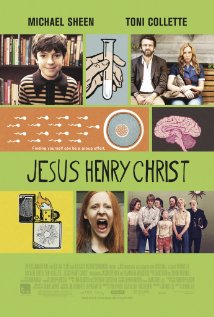 Jesus Henry Christ is a quirky title – true to the nature of the film; a film that I feel is somewhat under-appreciated. Director Dennis Lee‘s 2012 film, starring Jason Spevack in the role of a ten-year-old boy genius, is a refreshing take on growing up different, defying uniformity while still trying to fit in.
Jesus Henry Christ is a quirky title – true to the nature of the film; a film that I feel is somewhat under-appreciated. Director Dennis Lee‘s 2012 film, starring Jason Spevack in the role of a ten-year-old boy genius, is a refreshing take on growing up different, defying uniformity while still trying to fit in.
The film’s narrative is filled with ingenious humor and plot twists that kept me glued to the screen through the whole ninety-two minute length of the movie.
Martin’s Day (1985)
 Many classic Coming-of-Age films were never released on DVD and, with the disappearance of the VHS format, such films are harder to be seen and appreciated. Thankfully, after the 1985 film Martin’s Day was recommended to me by another reviewer, I was able to obtain a copy.
Many classic Coming-of-Age films were never released on DVD and, with the disappearance of the VHS format, such films are harder to be seen and appreciated. Thankfully, after the 1985 film Martin’s Day was recommended to me by another reviewer, I was able to obtain a copy.
The film relates the story of an unlikely relationship between an escaped convict and a young boy he kidnaps while on the run. Starring Richard Harris and Justin Henry (Kramer vs. Kramer) in the lead roles, the film offers exciting adventures, dramatic tension, and surprise plot twists.
The pace of the opening seemed slow. It’s as if the director wanted to make sure the audience gets to know the personality of the main character. Yet initially, the less-than-convincing editing results in confusion about what the subject matter of the film really is. As the plot develops, however, the story starts making sense and, by the end of the film (and most notably in its final scene), we witness significant improvement in editing in relation to the juxtaposition of times, mood and settings.
There are different ways in which one may perceive the film’s story. Some may decide that it exemplifies traits of Stockholm syndrome, as the kidnapped boy expresses empathy and sympathy toward his captors. And one can’t completely disregard such opinions, especially since by the end you are likely to find yourself rooting for the villain (I know I was).
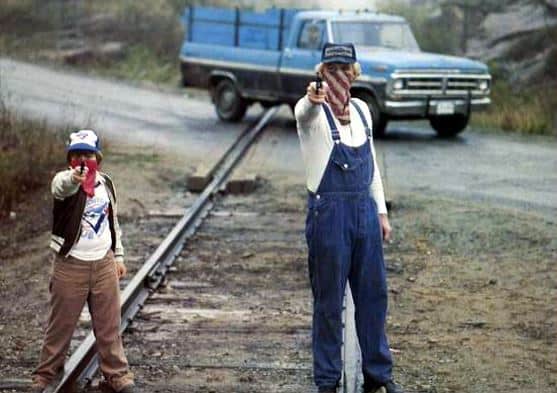
But my opinion is that the real goal of the film was to show that the boundaries of inter-generational friendship can be eliminated if people see in others the person they are. In other words, see where a person is presently, not where they were or where they will be. This is best seen when the psychologist assigned to the escaped convict tries to explain to the policemen in charge of the case the seemingly incomprehensible behavior of kidnapper and kidnapped:
“For a first time, this kid has found somebody who doesn’t give a shit about the rules. A friend who probably listens to him, who scares him, who likes him and who definitely never says ‘what the hell do you want? You are just a kid!’ They have both broken out of prison!”
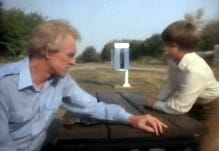 Many Coming-of-Age films that feature inter-generational friendships incorporate dialogue filled with wisdom, as the older character shares his experience with the youngster (and sometimes vice versa).
Many Coming-of-Age films that feature inter-generational friendships incorporate dialogue filled with wisdom, as the older character shares his experience with the youngster (and sometimes vice versa).
Some, like the Scott Hicks’s film Heart of Atlantis, end up serious and dramatic while others like Alan Gibson’s Martin’s Day rely on swifter action, tension and humor to keep the interest of their audiences.
Admittedly, I was afraid of a predictable ending, but thankfully Alan Gibson once again proved that my initial judgment of his directing skills was wrong. While the film was enjoyable (after the first 20 or so minutes), it is the ending that makes me recommend the film. I’m positive that you will appreciate its story, the conflict, and its resolution!
If you have seen the film or plan to see it you may also enjoy its tribute site available at martinsday.com
Red Summer (2012)
 If a film features beautiful cinematography and talented young actors, one may be willing to forego expectations for a challenging plot and/or surprising story twists. And that is, indeed, the case with the 2012 Vanessa McMeekin short film Red Summer.
If a film features beautiful cinematography and talented young actors, one may be willing to forego expectations for a challenging plot and/or surprising story twists. And that is, indeed, the case with the 2012 Vanessa McMeekin short film Red Summer.
Naturally my interest in it was inspired by the Coming-of-Age nuances of a story that focuses on the experiences of 12-year-old Daniel (Adam Wilson) as he discovers
Les Choristes (2004)
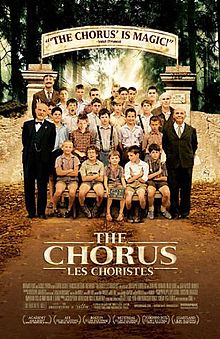 As somebody who has not seen very many foreign films, I was a little hesitant when approaching Christophe Barratier’s Les Choristes (The Chorus). However, the second I was transported back to 1945 to the Fond de L’Etang orphanage for ‘difficult boys,’ I completely forgot I was watching a foreign film altogether.
As somebody who has not seen very many foreign films, I was a little hesitant when approaching Christophe Barratier’s Les Choristes (The Chorus). However, the second I was transported back to 1945 to the Fond de L’Etang orphanage for ‘difficult boys,’ I completely forgot I was watching a foreign film altogether.
Introducing ChenLe Zhong
 Twitter is a wonderful media for the discovery of new movies, books or music. Recently, while scanning my timeline, I came upon a response to the Canadian singer Beamer Wigley (@BeamerWigley) — sent by another young singer from China — the 11-year-old 钟辰乐 ChenLe Zhong (nickname- Lele). Usually it is singers from the English speaking world that get featured in the English language media, but throughout the years we have introduced many young talents from across the world right here – at TheSkyKid.com .
Twitter is a wonderful media for the discovery of new movies, books or music. Recently, while scanning my timeline, I came upon a response to the Canadian singer Beamer Wigley (@BeamerWigley) — sent by another young singer from China — the 11-year-old 钟辰乐 ChenLe Zhong (nickname- Lele). Usually it is singers from the English speaking world that get featured in the English language media, but throughout the years we have introduced many young talents from across the world right here – at TheSkyKid.com .
One can find quite a lot of covers performed by ChenLe Zhong on YouTube, and even hear his first original song titled Music Boy, which was released in the summer of 2012. On many of his covers, he performs the songs of former child star Declan Galbraith who is (as is the case with many other young singers from the English speaking world) tremendously popular in Asia — and in China in particular.

Many people have compared Declan’s voice with one of an angel and young ChenLe does Declan’s songs justice, performing them confidently and with an equally pure and angelic treble voice. In January of 2011, the then 10-year-old ChenLe Zhong was invited to perform a song from Andrew Lloyd Webber‘s famous musical Cats at the Golden Hall of Vienna. Accompanied by the entire Vienna Philharmonic Orchestra, he delivered a beautiful performance:
Chenle Zhong sings Memory in Vienna’s Golden Hall
http://youtu.be/DkL67_w65Uw
Two years later, in January of 2013, the talented Chinese youngster released his second original song My Wings, a lyrical ballad which he performs in his native language. A Chinese website, which features a profile of ChenLe Zhong, characterizes his voice as: pure, sweet and mellow with resounding power and full of penetrability and explosiveness. These are characteristics one undoubtedly would agree with when hearing the boy perform.
That website also features lots more about ChenLe Zhong, including information about his hobbies (vocal music, playing the piano, swimming, hip-hop), favorite school subject (Mathematics, English) and a detailed timeline of his professional singing experience which, among his other accomplishments, includes three appearances in China’s Got Talent. Here’s a link to the English translation of ChenLe Zhong’s profile (via Google Translate) for anyone who wants to find out more about him: ChenLe Zhong Profile (Baike.Baidu.com)
Zhong Chenles Original song My Wings
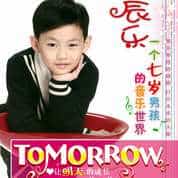 ChenLe Zhong has released two albums: Tomorrow (2010) and My Wings (2011). They each feature both songs in his native language and popular English language songs such as Tomorrow from Annie the Musical, I Just Can’t Wait to be King from the Lion King, and a beautiful cover of Declan Galbraith’s Tell Me Why.
ChenLe Zhong has released two albums: Tomorrow (2010) and My Wings (2011). They each feature both songs in his native language and popular English language songs such as Tomorrow from Annie the Musical, I Just Can’t Wait to be King from the Lion King, and a beautiful cover of Declan Galbraith’s Tell Me Why.
Not wanting to overload this introduction with video clips, I selected two (above) out of the many one can find at YouTube. Discovering the songs of the young Chinese singer is a rewarding experience and I invite you to share that experience by searching for his name on YouTube. A ChenLe Zhong fan page is available on Facebook and you can follow him on Twitter @ZhongChenLe. He is quite active on the social media and one can’t help but notice the friendly communication he maintains with singers his age from across the globe.
I hope that you have enjoyed this introduction and will help the young ChenLe share his music and talent.
Onni von Sopanen (2006)
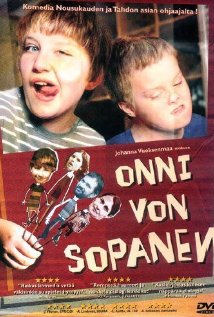 Onni von Sopanen is a 2006 Finnish film directed by Johanna Vuoksenmaa. The main protagonist is Onni (Kaarlo Somerto), an eleven-year-old boy who lives with his parents and older sister Isa.
Onni von Sopanen is a 2006 Finnish film directed by Johanna Vuoksenmaa. The main protagonist is Onni (Kaarlo Somerto), an eleven-year-old boy who lives with his parents and older sister Isa.
One day, after a Biology class at school, Onni starts to suspect that he might be adopted because the color of his eyes does not match those of his parents.
Furthermore, he believes that his older sister always gets what she wants, while he has to be content with the leftovers – such as his mom’s old cell phone. A new kid joins Onni’s class, and he makes no secret that his mother adopted him, which for a while gets onto Onni’s nerves.
There are very few things that may get one’s attention in this otherwise typical youth TV film from Finland. Firstly, one can get used to the lack of snow or any winter scenes from watching Scandinavian movies. Secondly, a scene that gives away the European origin of the flick: a group of boys with Speedos making fun of one who wears shorts as a swimming suit (something I see as the norm rather than an exception).
Other than that, there are very few suspenseful scenes, events, or story twists that might keep one interested in the film past the first twenty minutes. It almost feels like someone took a camera on a class field trip or to school and filmed around.
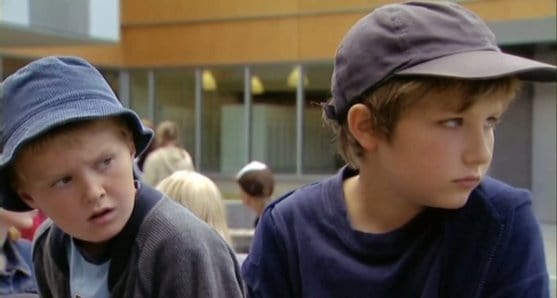
Onni von Sopanen is a sensible movie told from the perspective of its 11-year-old protagonist. It is rather dry and subtle in its humor but includes excellent character acting and writing.
It’s tough, though, to criticize any film too harshly that shows the daily life of Finnish kids nowadays. Maybe the events that occur in this day and age are somewhat less adventurous and exciting than those of the past.
That would explain why so many great Coming-of-Age stories are set in the 60s or the 70s. Still, Onni von Sopanen, while intended as a fun children’s film, is more likely to bore you than entertain you (the funniest thing about the film is its DVD cover art).
http://www.imdb.com/title/tt0819792/reference/

